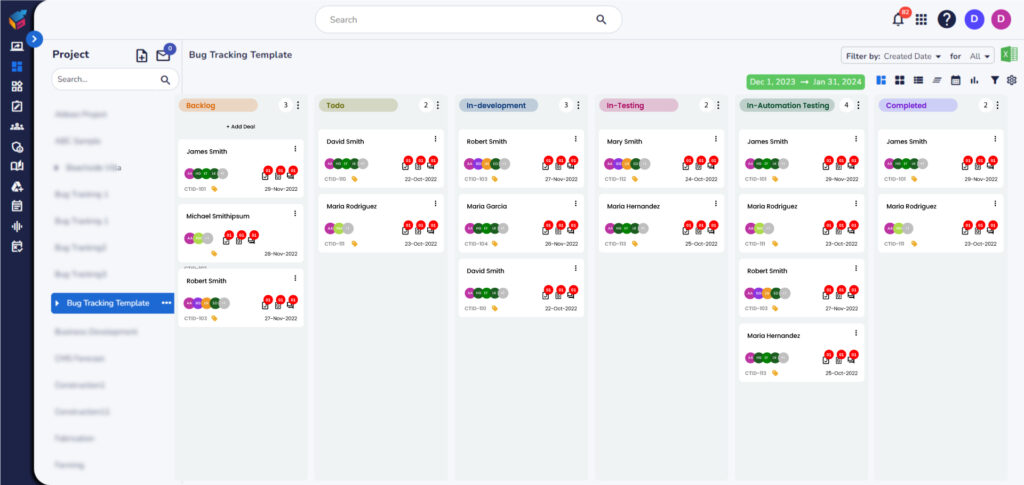Table of Contents
A successful project needs proper management and well-organized processes. Project management is a long and complicated process that involves several stages. Managing all the stages in a well-organized manner is not an easy task.
As a manager needs to handle several projects, project management tools can be used to manage multiple projects at a time. These tools provide automation and ensure the project travels towards the right path throughout the project lifecycle.
This article elaborates on what project management is, what a project lifecycle is, the different phases of the project lifecycle, and its benefits.
What is project management?
Project management is a set of processes used for successful project completion. From planning to completion, it has several processes. Each process needs to be monitored carefully for successful completion. For efficient project management, skills, knowledge, experience, and tools are required. Project management tools provide streamlined workflows and automate various processes.
Project management tools like Yoroproject provide various features like task management, time management, resource allocation, and customizable dashboards. This software has project tracking tools integrated with it to track and monitor project status.
What is a project lifecycle?
Project lifecycle refers to various stages of projects from planning to completion. For efficient project management, it is divided into various phases. Project lifecycle management is more efficient than managing the whole project as it is. Project lifecycle management includes various phases like project planning, initiation, analyzing, execution, tracking and monitoring, reporting, and evaluating.
Project lifecycle phases
The phases of the project lifecycle vary as per the requirement. The basic seven phases of the project lifecycle are explained below:
Project initiation
The project initiation phase is the first phase even before the planning. The main goal of this phase is the preparation of the project charter. The project charter is a document that outlines the project scope, goals, risks, stakeholders, and requirements. This phase helps the team to understand the project requirements, and chances for risks to occur, to create good relationships with stakeholders.
Analysis phase
In this phase, the team will analyze all the requirements, risk factors, resources available, skills, and budget in detail. The report generated in this phase will provide in-depth information about all these factors. This will help the team to enhance their work management throughout the project lifecycle.
Project planning
In this phase, the team will create more detailed planning. This includes dividing the project into various tasks, timeline setup, goals, and targets that will be fixed, budget calculations, and prioritizing the task based on urgency. Based on this planning the rest of the project will be worked on.
Project execution
The project execution phase will start implementing the ideas and plans. This includes resource allocation, assigning tasks, and trying to reach the targets. This phase will follow the project roadmap provided in the previous stages. Yoroproject provides task boards for assigning tasks. This Kanban board will help the team members stay updated regarding the task status

Tracking and monitoring
Tracking and monitoring all the tasks are very important to ensure that the project moves towards reaching goals and targets. The task board in the Yoroproject allows users to view the task’s status then and there. This reduces the risk of many bottleneck situations.
Reporting
Reports will provide the project’s status at all stages. The reporting system shows the growth of the project throughout the project lifecycle. Yoroproject provides a customizable project dashboards for report generation. This dashboard provides reports based on various factors like tasks, team performance, timeline, budget, and targets.

Evaluation
Once all the project lifecycle phases are completed, the team will evaluate the reports to understand how the project went, what issues were faced, and how it was sorted out. This helps the team to enhance their efficiency in their next projects. Also, this can be documented that will be helpful for training purposes.
Benefits of the project lifecycle
Instead of working on the project as it is, working with smaller phases of the project provides more benefits.
- Easy to address the issues.
- Can monitor the status easily.
- Each stage outcome ensures that the project runs towards successful completion.
- Resource allocation can be more efficient.
- Risks can be identified then and there in each stage.
- Reduces bottleneck situations.
- Effective communication.
Enhance your project management with our Yoroproject
Yoroproject provides various features that help the team to improve the outcome of each phase. It automates several repetitive tasks like resource allocation, tracking and monitoring the progress of the project at each stage, and generates reports. It provides customizable dashboards for reporting systems, which can be used to create various reports as per the requirements. The team can leverage all the features of the Yoroproject and achieve their goals and targets more efficiently.




